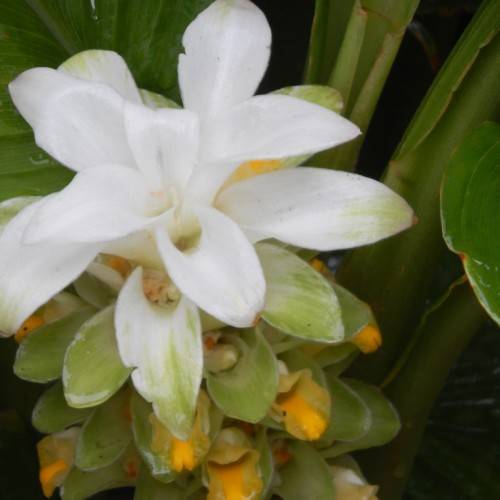
common turmeric
Curcuma longa
Cycle:
Herbaceous Perennial
Watering:
Frequent
Hardiness Zone:
8 - 11
Flowers:
Flowers
Sun:
Full sun,part shade
Growth Rate:
Low
Maintenance:
Moderate
Drought Tolerant:
Yes
watering
Common turmeric (Curcuma longa) plants should be watered once or twice a week, in the morning, until the soil is moist but not soggy. Allow the soil to dry out between waterings. To check the soil, simply stick a finger in the dirt. If the top few inches of soil feel dry, it is time to water. During the winter months, these plants should be watered less frequently. To ensure that your turmeric plants stay healthy, water them enough to keep the soil moist but not saturated.
sunlight
Common turmeric requires a minimum of 6 hours of direct sunlight each day. Ideally, full sunlight should be provided between the hours of 8 am and 4 pm for optimal growth. As with most plants, too much sunlight can be detrimental, so it is important to ensure that the plant has access to enough sunlight while providing it with adequate shade during hot, sunny hours. When provided with the right amount of sunlight, common turmeric will flower in the summer and produce its signature edible, bright orange rhizomes.
pruning
The best time to prune common turmeric (Curcuma longa) is during the early spring before the plant begins to actively grow. However, if necessary, light pruning can also be done in late summer. It is important to prune common turmeric carefully and sparingly as the plant does not tolerate heavy pruning. Remove any dead, dying, or diseased stems, as well as any overcrowded or weak stems. Also, any stems that are competing with the CentraLe stem should be removed. The overall goal should be to create and maintain an open and airy shape. Generally, a light pruning of 1/3 of the aerial part of the plant can be done every few years. This encourages branching, a bushier habit, and more abundant flowering and fruiting. When pruning, use clean, sharp tools and make sure to make clean, angled cuts.
